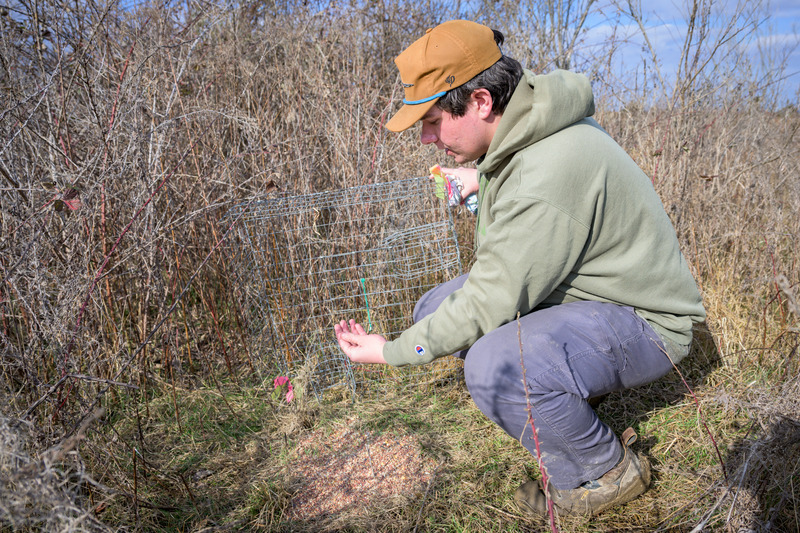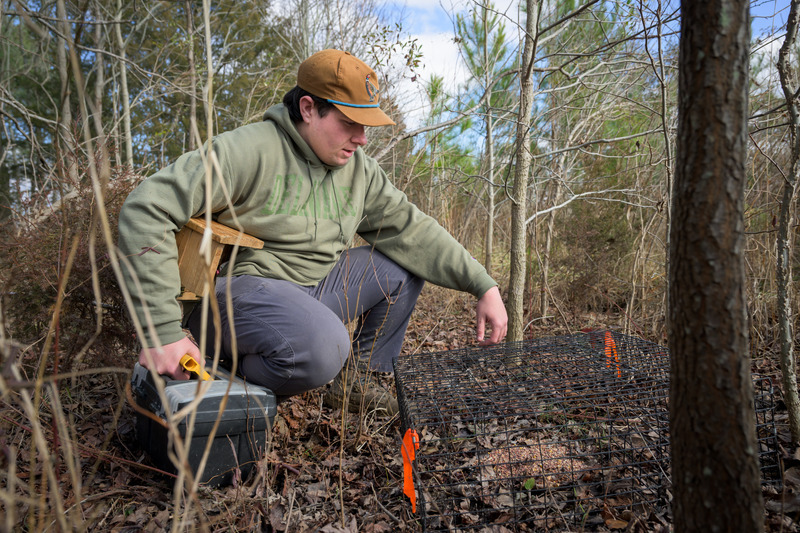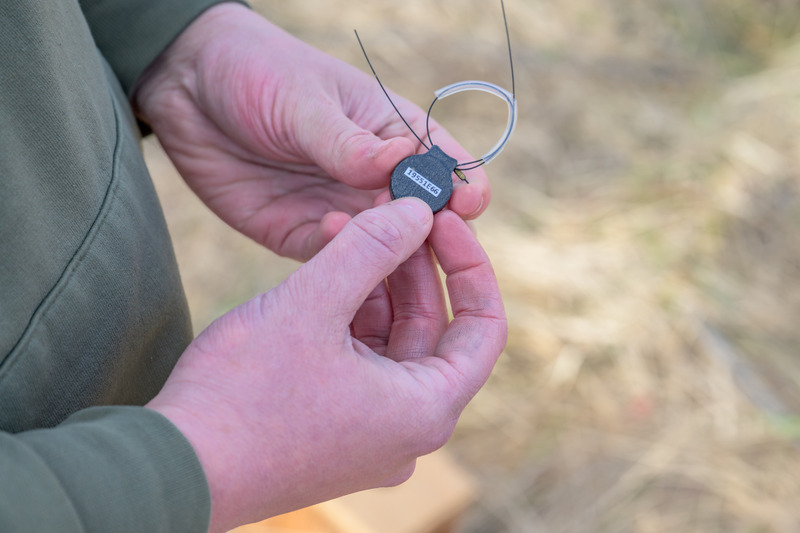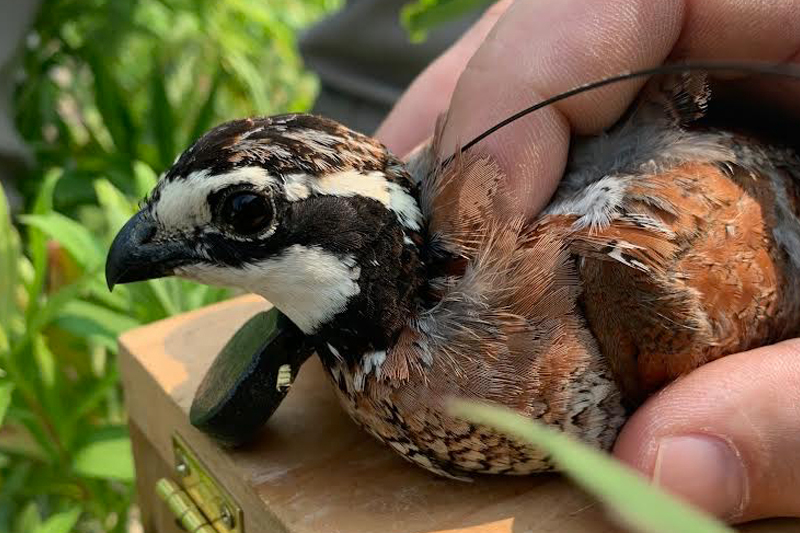


Quail conservation
Photos by Evan Krape and courtesy of John Hendell March 11, 2024
UD undergraduate student John Hendell enhances conservation efforts for bobwhite quail through senior thesis project
Having a healthy human society is largely dependent on the state of the native ecosystem that surrounds it. Having a robust ecosystem can help the humans around it thrive. This is why aspiring wildlife conservationists, like University of Delaware student John Hendell, are essential if local communities want to continue to prosper.
In his final semester of UD’s wildlife ecology and conservation major, Hendell is completing his senior thesis this spring. He is tracking bobwhite quail movement and habitat use throughout Cedar Swamp, a wildlife management area near Smyrna, Delaware.
“If you know the habitats that a species survives better in, it relates to the habitat management and preservation that can be done at the site,” Hendell said. “Hopefully, at the end of the study, we’ll have some answers about when and why they are using certain habitats.”
According to Chris Williams, professor of wildlife ecology and director of the Waterfowl and Upland Gamebird Center, bobwhite quail populations are steadily declining due to a number of factors the way land is used.
“As we started converting more land to suburbia and began using fertilizers and pesticides in industrial agricultural systems, it really cut down on available preferred habitat and food for quail,” said Williams, who also holds a joint appointment in the Biden School of Public Policy and Administration and serves as UD’s associate provost and academic director for the Office of Sustainability.
Although the quail population at Cedar Swamp, where Hendell is primarily conducting his research, is one of the densest quail populations in the mid-Atlantic region, the Delaware Department of Natural Resources and Environmental Control (DNREC) is looking for ways to increase their survival rate. This is where Hendell’s research comes in.
“DNREC is interested in how the quail are using the habitat that they’re managing, what kind of survival rate we’re seeing, and just general habitat use patterns,” said Jeff Buler, professor of wildlife ecology and Hendell’s thesis advisor. “Whatever they’re doing, they’re doing it well, but they want to know if they can do any better for these birds.”

Hendell is employing the use of a popular tool in the wildlife conservation sphere — telemetry — to complete his thesis research. Wildlife telemetry is a method that includes attaching small radio transmitters onto animals so that their movement patterns can be precisely tracked over time.
“Telemetry is super widespread. I think you’d be hard pressed to find a study that didn't use telemetry at this point,” Hendell said. “Once we’ve worked through where the birds physically are, we can determine what habitats are most important, which ones are getting used the most and how that relates to their survival.”
Getting involved with research projects as an undergraduate, like Hendell has, can position students for a smoother transition from college to the professional world.
“Doing a senior thesis project is definitely giving our students an advantage when applying to graduate school,” Buler said. “Even for those that don’t want to go into graduate school, having that research experience is where they learn the techniques they’ll use in a career in wildlife biology.”
“Obviously, there’s the scientific piece of understanding habitat use, but the biggest takeaway for me is learning how to coordinate a project with different organizations,” added Hendell. “It's not something I’ve done before and it's definitely something that I’ll carry with me in the future.”

Projects like the one Hendell is conducting can translate to projects on a much larger scale. Williams and Buler have brought Hendell on to a quail reintroduction project as well, using the same Motus Wildlife Tracking System network Hendell is currently using for his thesis project.
Starting in March, the researchers plan to introduce quail from around the East Coast to the Letterkenny Army Depot habitat in Pennsylvania, where quail are currently extinct. Williams said the goal is not only to bring quail back to Pennsylvania, but to improve techniques that can help restore regionally extinct wild animals.
“In a way, John’s project has been a pilot study for us so that we can use this technology successfully with quail on a larger scale,” Williams said.
The plan to introduce quail in Pennsylvania will utilize a lot of the same techniques that Hendell is currently using for his thesis project. The research team tags every bird with a leg band, and affixes some birds with a radio transmitter to track movements. Hendell plans to continue his work with tracking quail movement through this reintroduction plan beyond his UD graduation.
With wildlife conservation in mind, UD students are able to accomplish so much for native ecosystems, and in turn human society.
“There’s a lot of concern about wildlife conservation and sustainability. Students that get degrees in wildlife conservation and ecology go on to work for agencies like DNREC, whose mission is to protect our natural resources,” Buler said. “It’s all about protection and conservation of natural resources.”

Contact Us
Have a UDaily story idea?
Contact us at ocm@udel.edu
Members of the press
Contact us at 302-831-NEWS or visit the Media Relations website

